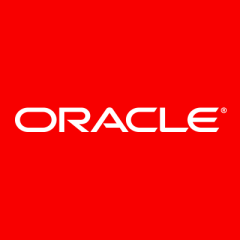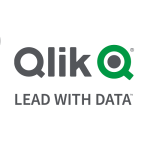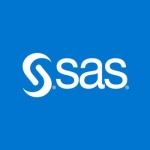What is our primary use case?
My role was to administer, develop, create, or enhance the reporting in analytics that was based on the Oracle Business Intelligence products including the cloud, publisher, or some of the embedded reporting capabilities of the Primavera suite.
Each business has its own use cases developed by the analyst, but most of the use cases were related to financial reporting or purchasing. Purchasing has been a very solid use of it and also project management. For project management, OAC was tied to an Oracle installation of Primavera, which is project management software. They were hand in hand. It not only involved logistics but also the financial aspects of projects.
In terms of deployment and version, it's provided by Oracle. Oracle Cloud solutions are always going to be of the latest version. Nobody has an old version of a cloud application.
What is most valuable?
The stability of the product itself by virtue of the fact that it's a cloud product and Oracle is responsible for its hosting is valuable. There is no question about its uptime, reliability, and so forth.
It's robust. It has the ability to handle massive amounts. After reporting has been developed, there is an ease of use or a user-friendly interface for a trained workforce.
What needs improvement?
It's not a failure of the product; it's just an architectural choice. It has to do with data modeling. I'm comparing this to another product, which is Oracle's developer client and probably called Oracle BI Developer Client Tool. The data modeler, which is cloud-based, and Oracle BI Developer Client Tool, which is local or on-premises-based, both can do the same thing in data modeling. However, the cloud tool does not have as many features as the Oracle BI Developer Client Tool, which is closest to the OBIEE Administration Tool with full feature data modeling, metadata development, and so forth. In a complex environment or implementation, that is the capability that you need. The data modeler, which is cloud-based, simply does its job well, but it just doesn't have as many fine-tuning capabilities. It does not allow as much performance tuning as the Oracle BI Developer Client Tool, which is the closest thing to the older OBIEE Administration Tool.
For how long have I used the solution?
I have about 10 to 11 years of experience with Oracle products and before that, 8 years with Crystal products. I haven't used Crystal in the last 12 months because not a lot of people use Crystal anymore unless they're using SAP products, but in the last 12 months, I spent nine months working with project teams servicing their clients in cloud technology, specifically in project management.
Buyer's Guide
Oracle Analytics Cloud
October 2025
Learn what your peers think about Oracle Analytics Cloud. Get advice and tips from experienced pros sharing their opinions. Updated: October 2025.
872,706 professionals have used our research since 2012.
What do I think about the stability of the solution?
There is no question about its uptime, reliability, and so forth.
What do I think about the scalability of the solution?
It's absolutely scalable. The engagement that I worked on was still in the proof of concept phase. I was on the front end of the development of the project, and I didn't administer the product. When it moved to production, it transitioned to a different team, and they handled about 500 users. I know it's capable of handling thousands, but in the particular implementations I've worked on, it wasn't offered to thousands.
I certainly have plans to increase its usage because I'm getting a certification in it. I hope more companies are going to be using the product. I'm relying on that.
How are customer service and support?
I did not have direct experience with their technical support.
How was the initial setup?
The cloud products that I worked on were already established. However, I do know how to set it up because it's very similar to the OBIEE implementations that I've done. So, even though I have not set up the cloud instance, from going through not only setting up test cloud environments that I've been studying from, I would say that there are two parts. One is getting the initial credentials all set up. This is way before you even get to the software. This is an Oracle thing. Sometimes, getting the credentials worked out properly to be able to access all the pieces that you need can be a little sticky. Getting the credentials is not as simple as it could be.
The second part of setting up the cloud would be complex if you don't have prior experience in the architecture that it was based on, which was the OBIEE on-premises implementation. So, if you don't have that background, it's very complex. Even if you have that background, sometimes, the cloud installation just doesn't exactly match, and you've got to scratch your head and say, "Okay, what's the thing that's not in the documentation that I need to figure out how to do to make it work?"
What about the implementation team?
You can deploy it with one person. I've deployed an entire OBIEE installation entirely by myself. It's not recommended, and it's not the best way, but it can be done. I know, I've done it. To administer or manage it once it's in place, the ideal team would be at a minimum a three to four-person team. Some companies, when they say, "We need to put in BI, and we need people to do that," they're also, without saying it, asking for someone to set up a data warehouse, run ETL, build and maintain that, run the BI, build the interface, do the reports, and teach or train the employees, which is something I've done. In that kind of situation, you need a three or four-person team at minimum to distribute everything from the data warehouse work, ETL, report development, training, and so on. If something is already set up or we're talking about a cloud environment, there may be no data warehouse. If it's all cloud-based, there's no maintenance there. There may also be no ETL because it can be built in. It's just maintaining the BI instance. If the person you're asking to maintain the BI system is not asked to train users, you don't need that skill either. So, it can be done by one person. It depends on what the client desires and is expecting, and for the cloud implementation, what other services the client is already paying for.
What was our ROI?
There is absolutely a return on investment with this.
What's my experience with pricing, setup cost, and licensing?
I would rate it a 5 out of 5 in terms of the value received for the price charge.
Which other solutions did I evaluate?
I have been involved in evaluating other BI solutions for clients, such as Birst, Tableau, and Cognos.
What other advice do I have?
I would advise finding somebody who has done OBIEE because the foundation, the learning, and the experience of that is absolutely essential or integral, if not critical, to success in Oracle Analytics Cloud.
I would rate it a 9 out of 10 because everything can be improved. It's great, and it's capable. There are a lot of excellent things about it, but there's always room for improvement.
Which deployment model are you using for this solution?
Public Cloud
If public cloud, private cloud, or hybrid cloud, which cloud provider do you use?
Other
Disclosure: My company does not have a business relationship with this vendor other than being a customer.


















